HSBC has released analysis showing how since the pandemic, birth rates have fallen considerably faster than predicted three or four years ago.
Many people thought that when the the pandemic subsided, the number of babies born would rebound. However, the converse has happened, and the decline has accelerated.
According to HSBC, birth rates fell by roughly 4.5% on average in 2023, with Australia’s falling by just over 3%:
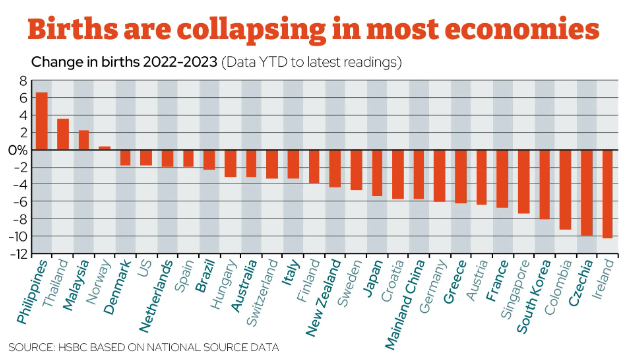
“There is a big issue with housing”, the article notes. “HSBC quotes evidence that a 10% increase in house prices leads to a 1.3% drop in birth rates, and an even sharper fall among renters”.
“Intuitively that makes sense. If you are saving to buy a home you delay starting a family”.
The next chart shows that Australia’s natural population increase (births minus deaths) collapsed to a record low 105,800 in the year to June 2023:
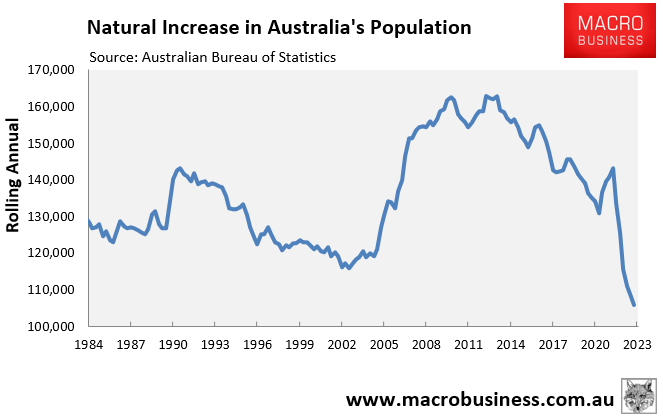
Australia’s fertility rate also collapsed to just 1.63 in 2022 (latest available data), according to the ABS, which is well below the 2.1 required for population replacement in the absence of net overseas migration:
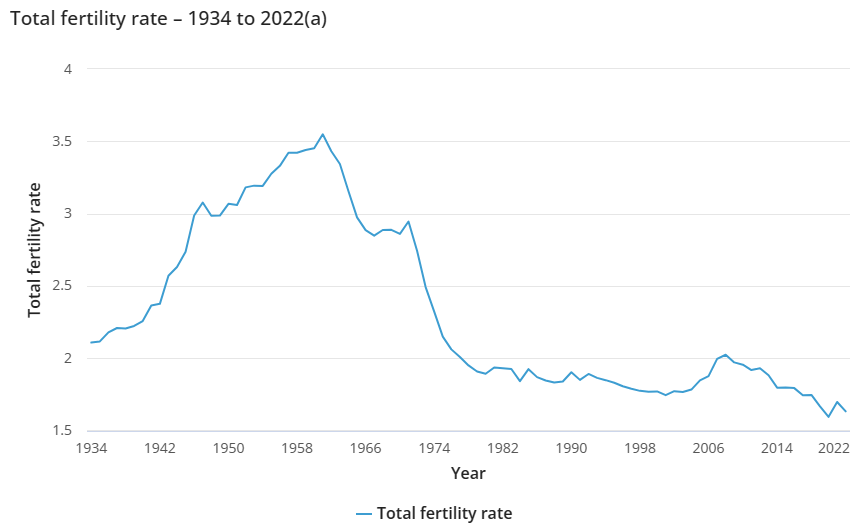
The median age of parents also rose to a record high of 33.7 (fathers) and 31.9 (mothers) in 2022, according to the ABS:
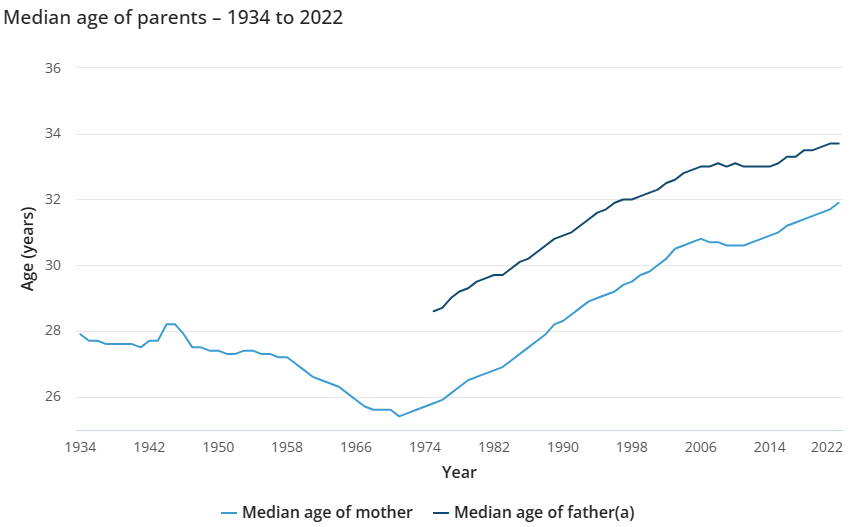
The cost to purchase a home or rent has obviously surged in Australia over the pandemic, amid 4.25% worth interest rate hikes by the RBA and record high net overseas migration.
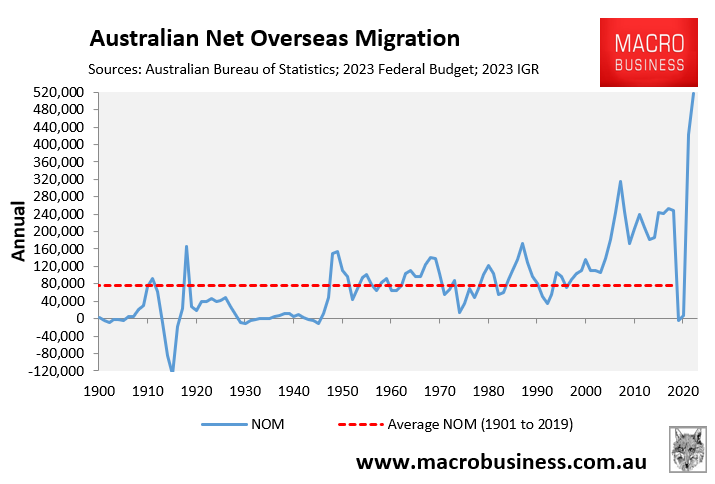
Australian households are carrying the second largest debt loads in the world behind Switzerland:
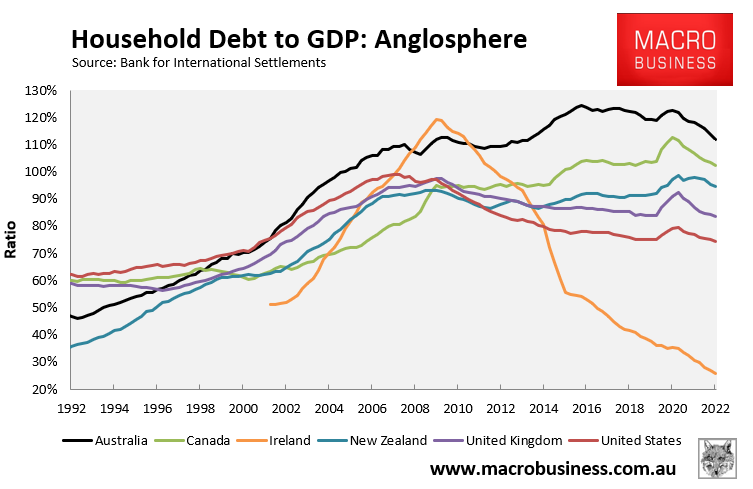
And because most Australians carrying mortgages are on variable rates, they spend a higher share of their disposable incomes on debt repayments than most other nations:
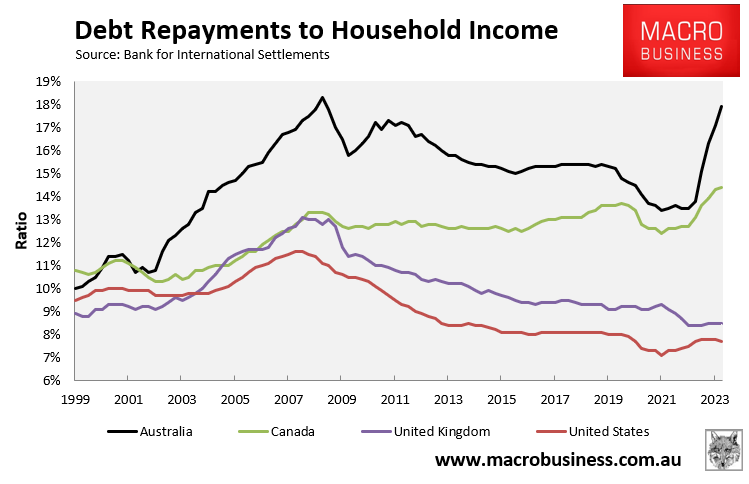
To add further insult to injury, the real household disposable incomes of younger Australians have fallen at the fastest pace in history, as shown below by independent economist Tarric Brooker:
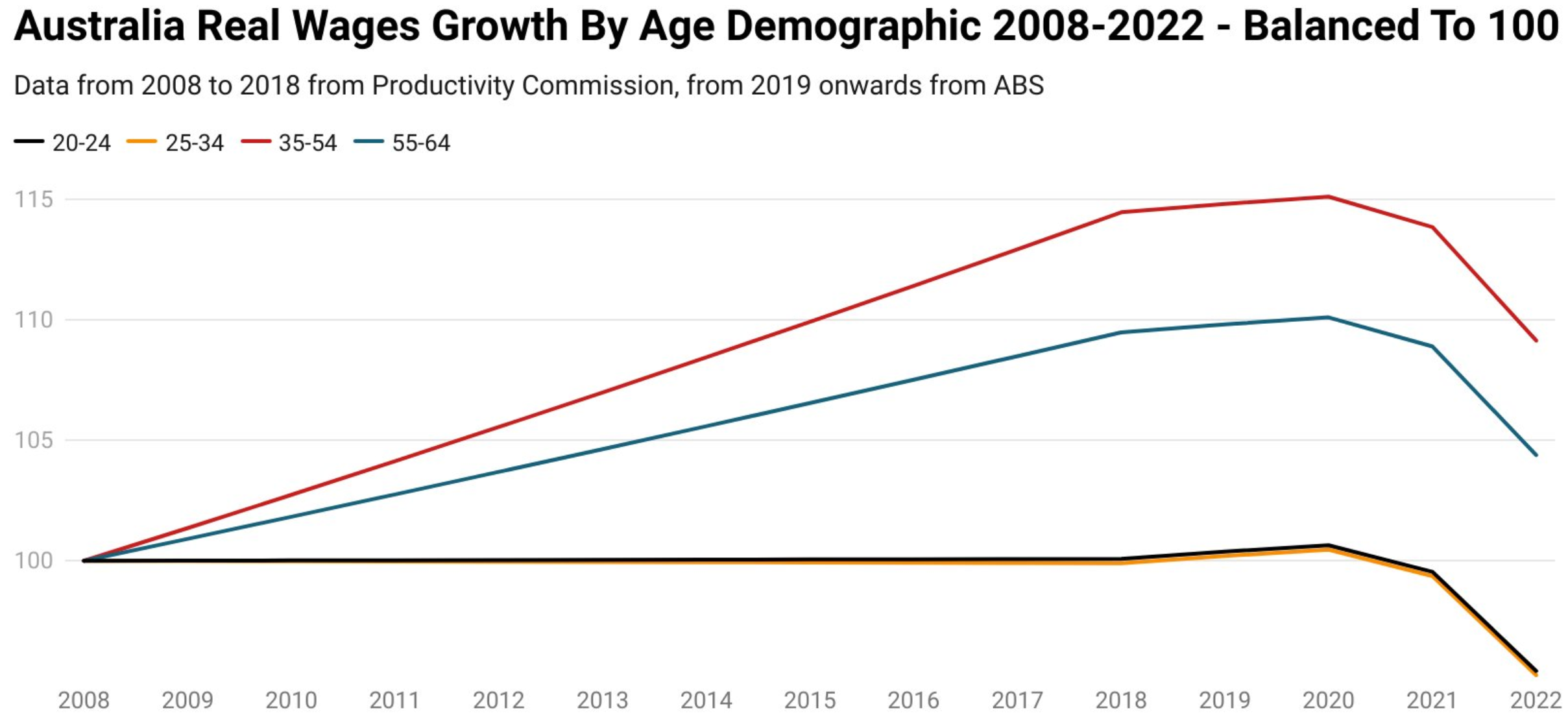
Chart by Tarric Brooker
In essence, high housing costs (both purchase and rental) combined with falling real incomes have rendered having children in Australia uneconomic.
In response, the federal government has compensated for the falling birth rate by lifting immigration to unprecedented levels, which only helps to make housing even more unaffordable and places downward pressure on younger Australians’ wages.
The problem of falling birth rates is partly economic and the direct result of stupid policies by the federal government.

